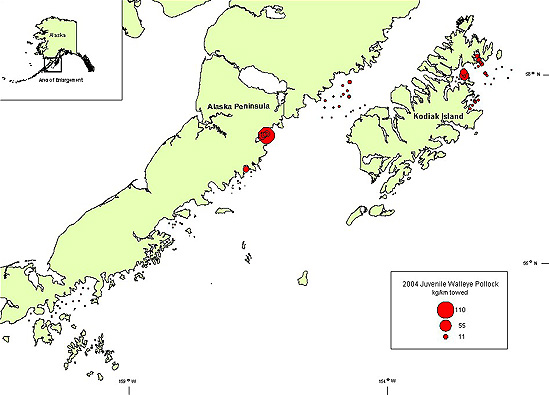Midwater Assessment & Conservation Engineering (MACE) Program
Members of the Midwater Assessment and Conservation Engineering (MACE) Program participated in a
Simrad EK/ER60 acoustic system user meeting with Simrad representatives Lars Andersen and Jeff Condiotty
at the Center on 19 November 2004. Scientists from the Northwest Fisheries Science Center, University of
Alaska, University of Washington, Canada Department of Fisheries and Oceans, and Sonardata Ltd. (Australia)
also participated. Lars Andersen summarized features of the latest Simrad ER60 software and responded to
questions submitted earlier by EK/ER60 users.
Participants discussed: 1) potential improvements to the software; 2) results of comparisons between the
older EK500 acoustic system and the new EK60; 3) test results from users that suggested an EK60
performance instability; 4) relative merits of different single target detection algorithms in scientific
fisheries acoustic systems; and 5) other emerging technologies that Simrad is developing for fisheries
acoustics applications. A summary report of the meeting is available to subscribers of a NMFS-sponsored
EK60 user list server.
Alex De Robertis and Dan Twohig of the MACE Program participated in acoustic testing of the new NOAA fisheries
research vessel, Oscar Dyson from 9 to 17 December. The Oscar Dyson has been designed and built
to conform to international standards for underwater-radiated noise to minimize fish avoidance reactions to the
vessel.
As part of acceptance testing prior to delivery, the Oscar Dyson underwent acoustic testing
conducted by the U.S. Navy to confirm that the underwater-radiated vessel noise levels meet the design
requirements. During the Navy noise tests, De Robertis took measurements from hull-mounted hydrophones to
identify sounds produced by the vessel. These baseline hydrophone measurements were compared to vibration and
far-field noise measurements made simultaneously at the noise range. They will be compared with future
measurements to identify changes in the underwater-radiated noise signature produced by the Oscar Dyson
over its service life.
By Taina Honkalehto
Recruitment Processes Program
In response to reports of extremely high numbers of age-0 juvenile walleye pollock caught during RACE
summer acoustic surveys in the Chiniak Bay area of Alaska, scientists from the Recruitment Processes Program
collaborated with the Shellfish Assessment Program to collect data from several fall 2004 cruises to look at
the extent of the age-0 pollock distribution and collected samples to examine condition of these fish. The
samples were obtained opportunistically because no fieldwork targeting juvenile pollock had been planned.
The first set of samples were obtained during a September cruise on the NOAA ship Miller Freeman from
the inner continental shelf bordering the southern shore of Kodiak Island (5 tows) and in the vicinity of
Sutwik Island (4 tows). The sample size was small, but there was no indication that the abundance of fish
near Sutwik Island was large relative to catches at the same locations during September 2000, 2001, and 2003.
The samples off Kodiak were collected by targeting echo-layers,which complicates comparisons with other data.
However, there was no indication of anomalous fish size (mean standard length = 87 mm, range = 50117 mm).
The
second set of samples were collected during the autumn shrimp survey conducted by the ADF&G. Ninety-two hauls
were set in stations in Chiniak and Marmot Bays, Shelikof Strait, and bays along the Alaska Peninsula from
Wide Bay to Sand Point. Approximately 300 fishes from 20 stations were collected, and 2,832 fishes from 73
stations were measured. Two large concentrations of age-0 pollock were found, one in Wide Bay and the other
in Marmot Bay (Fig. 10 below). However, there was no indication that high abundances of age-0 pollock were widespread.
By Kevin Bailey, Matthew Wilson, and Michael Litzow
 |
Figure 10. CPUE of all juvenile walleye pollock in ADF&G shrimp trawl surveys. Age-0 analysis is in
progress, but not expected to look different. Map courtesy of Dave Jackson, ADF&G Kodiak.
|

|

|
Quarterly sidebar
AFSC Quarterly Research Reports Oct-Dec 2004
Contents
Feature
Items
ABL Reports
NMML Reports
RACE Reports
REFM Reports
Quarterly Index
Quarterly Home
|

